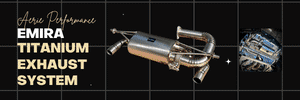In a post earlier in this thread, I agreed that the installers did a wonderful job with the install cosmetic/workmanship wise, it's top quality work. Both thumbs up from me.
My posts are focused on what they said about why they thought the OEM system was no good, and why they chose to do some of the things they did. The OEM system could sound terrible - I don't know - but if so, it's not for the reasons they mentioned. Their system could be the best system in the world ever - again I don't know - but if so, it's not for the reasons they mentioned.
I appreciate all that you wrote above, but some of the claims you made are simply not true. Just as one example, you don't get deeper sound stage by moving a midbass speaker playing up to 500Hz further away. Sound stage perceived depth is primarily a function of the level of direct sound vs reflected sound. The higher the amount of reflected sound compared to the direct sound, the deeper the sound stage will appear to be - up to the limit of subjective preference. We know that the listening room reflects sound at both high and low frequencies. At low frequencies below about 800-1kHz, the wave lengths are so long that reflected sound primarily develops cancellation/reinforcement spots in the car, largely dependent on cabin modes. These cancellation/reinforcement spots are indistinguishable to our ears from the direct sound - we don't hear them as reflections, just louder/quieter depending on which spot in the car you are listening at. It's at higher frequencies above 1kHz that the timing differences between reflected vs direct sound in a car, which are usually 3ms for the primary reflection, and 6ms for the secondary, becomes meaningful enough for reflected sound to be detected as a distinct sound from the direct sound by our ears. Therefore, it's simply not possible that moving the midbass driver further away would cause the sound stage to be "deeper" if the midbass primarily plays lower frequencies - 500Hz in your example. You may activate different cabin modes, and it will certainly sound different - I will note that the kick panel location is usually a corner of the cabin - but definitely not a deeper sound stage.
Look, I'm not here to win an argument - I care about sound quality and I'm concerned about the sound quality of the KEF system in the Emira based on how poorly it's been reviewed by owners and third parties. I just want to press the point that our criticism of the system and any corrective actions we take should be based on facts and logic.







